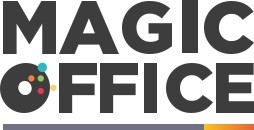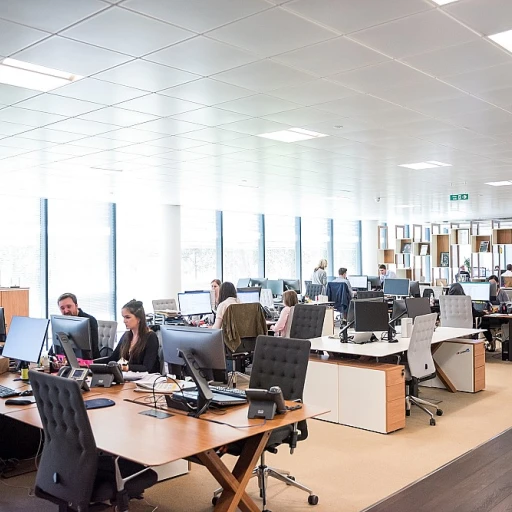Understanding the Unique Challenges of UK Retail
Recognizing and Overcoming Common Obstacles in UK Retail
The retail landscape in the UK is distinct and presents its own challenges that set it apart from other markets. Navigating these challenges is crucial for successful store operations. Retailers must grapple with a highly competitive environment, diverse customer preferences, and rapidly evolving consumer expectations. Understanding these unique factors is the first step in optimizing retail business operations.
UK retailers often face intense competition from both local and international brands. This pressure necessitates that businesses maintain efficient workflow management and retail automation systems to stay ahead. Furthermore, adherence to cultural nuances in customer service is vital for creating a seamless customer experience.
Enhancing workplace efficiency becomes paramount, not only in back-end operations like inventory management but also in retail sales and marketing campaigns.
Retailers must manage complex logistics, including supply chains and retail merchandising, to ensure that inventory is both agile and responsive to real-time customer demands. This often involves exploring solutions for supply and demand analytics, retail workflows, and identifying pinch points in workflows that could lead to delays or overstocking.
Moreover, the UK market often requires businesses to navigate stringent regulatory frameworks, particularly around compliance and data protection, which can add additional layers of complexity. Implementing robust automation tools and workflow automation processes can be instrumental in tackling these barriers. These elements intertwine with strategic decisions in areas such as product development and store opening, which require meticulous planning and precise execution.
Streamlining Inventory Management
Inventory Efficiency: A Critical Component
Streamlining inventory management is crucial for the success of retail operations. Efficient inventory processes ensure that products are available when customers need them, reducing the risk of stockouts or overstocking. This part of the retail workflow involves meticulous planning and coordination.
In the UK, retail stores can benefit from automation tools that assist in real-time tracking of stock levels. These tools not only provide insights into current inventory but also help forecast future demand. By utilising advanced data analytics, retailers can optimise their supply chain management, ensuring a seamless flow of goods.
Integrating Technology in Inventory Management
Leveraging technology plays a significant role in enhancing inventory management. The use of platform-based solutions can help automate repetitive tasks, such as data entry, product categorisation, and order processing. This workflow automation not only reduces human error but also frees up time for store staff to focus on customer service and sales activities.
There is a growing trend towards adopting cloud-based inventory systems linked to unified retail workflows. These systems can quickly adapt to changes in sales patterns and customer preferences, providing flexibility and adaptability in the rapidly changing retail landscape. For more insights on how automation can enhance operational efficiency, explore this blog post.
Optimising Inventory through Data
Another essential component is the effective use of inventory data to drive decision-making. By analysing purchasing trends and customer demands, retailers can implement strategic marketing campaigns that align with inventory availability. Real-time data empowers management to make informed decisions that can directly affect the store's bottom line.
Ultimately, efficient inventory management is about maintaining the right balance of products to meet customer demands while minimising costs. With the right strategies and tools, retailers can optimise their inventory workflows, leading to improved store operations and enhanced customer experiences.
Enhancing Customer Experience
Crafting Memorable Retail Journeys
As UK retailers strive to gain a competitive edge, focusing on creating an unforgettable customer journey becomes paramount. The retail landscape is rapidly evolving, and businesses now understand that enhancing the customer experience isn't solely about the products or services they offer.
Effective strategies for enriching the customer experience revolve around several key elements. First, personalised marketing campaigns that leverage retail operations data can be a game-changer. By understanding customer preferences and shopping habits, retailers can tailor their promotions and ensure a more engaging shopping experience.
Additionally, seamless store operations can foster better customer interactions. Automation in areas such as inventory management and workflow automation allows staff to focus more on customer service rather than routine tasks. Adopting a robust explore solution to streamline processes can reflect positively during key interactions with customers.
Furthermore, enhancing the physical elements of the retail space, like layout and signage, plays a critical role. Clear signage and an intuitive store layout ensure that customers can easily find what they need, reducing frustration and improving satisfaction. Implementing strategies aligned with workflow management principles can lead to smoother movement throughout the retail store.
Finally, leverage technology to enhance real-time customer engagement. Platforms that offer augmented reality or mobile apps can provide customers with a more interactive shopping journey, thus boosting sales and customer loyalty.
By embracing these approaches, retailers can ensure that each customer leaves their store not just satisfied, but eager to return—a true mark of successful retail merchandising and process optimisation.
Leveraging Technology for Efficiency
Embracing Technological Advancements in Retail Operations
In today's fast-paced retail environment, leveraging technology has become crucial for enhancing operational efficiency. Retailers in the UK are increasingly turning to retail automation to streamline processes and improve the retail workflow. By adopting advanced technology solutions, businesses can substantially reduce time spent on manual tasks, allowing staff to focus on delivering exceptional customer service and increasing sales. One key area where technology plays a vital role is inventory management. Automation in this domain helps retailers maintain accurate stock levels, reducing discrepancies and minimizing the risk of overstocking or stockouts. With real-time data access, managers can make informed decisions, optimizing the supply chain and ensuring timely product availability for customers. Additionally, integrating a robust retail platform into store operations can enhance workflow automation. Such systems can efficiently manage marketing campaigns, sales analysis, and customer interactions, leading to streamlined operations and improved customer experience. Automated customer service tools, including chatbots and self-service kiosks, further support staff by handling routine queries, ensuring prompt attention to more complex customer needs. Moreover, technology plays a significant role in retail merchandising. Retailers can explore solutions like data analytics to understand consumer preferences and market trends, leading to more effective product development and merchandising strategies. By continuously evolving their approach, stores can maintain a competitive edge in the ever-changing retail landscape. Investing in these technologies not only elevates in-store efficiency but also enhances the overall retail business process. Retailers must stay updated with current technological trends and innovations to continually improve store operations and customer satisfaction.Training and Development for Store Staff
Empowering Store Staff Through Continuous Learning
In the ever-evolving retail landscape, focusing on the continuous development of store staff is crucial for improving store operations. Training is not just a one-time event but an ongoing process that ensures staff are equipped with the necessary skills to adapt to changes in inventory management, advancements in retail automation, and the dynamic needs of customers.- Fostering a Culture of Learning: Encourage a culture where staff feel motivated to learn and grow. This can be achieved through regular workshops, seminars, and hands-on training sessions that focus on enhancing customer service skills, understanding retail workflows, and mastering new technology platforms.
- Implementing Technology in Training: Leveraging technology can make training more efficient and engaging. e-Learning platforms and simulation-based training can offer interactive learning experiences, allowing employees to practice real-time decision-making in customer service and inventory processes.
- Tailored Training Programs: Individualized training programs can address specific areas for improvement in retail store operations. For instance, staff involved in retail merchandising could benefit from dedicated courses on effective product development and marketing campaigns while those in sales and customer service might focus on improving their communication skills and customer engagement strategies.
- Feedback and Assessment: Regular feedback sessions and performance assessments allow management to identify areas where employees excel and where further development is needed. This approach not only enhances the skillset of employees but also aligns their personal growth with the business goals.




-large-teaser.webp)








